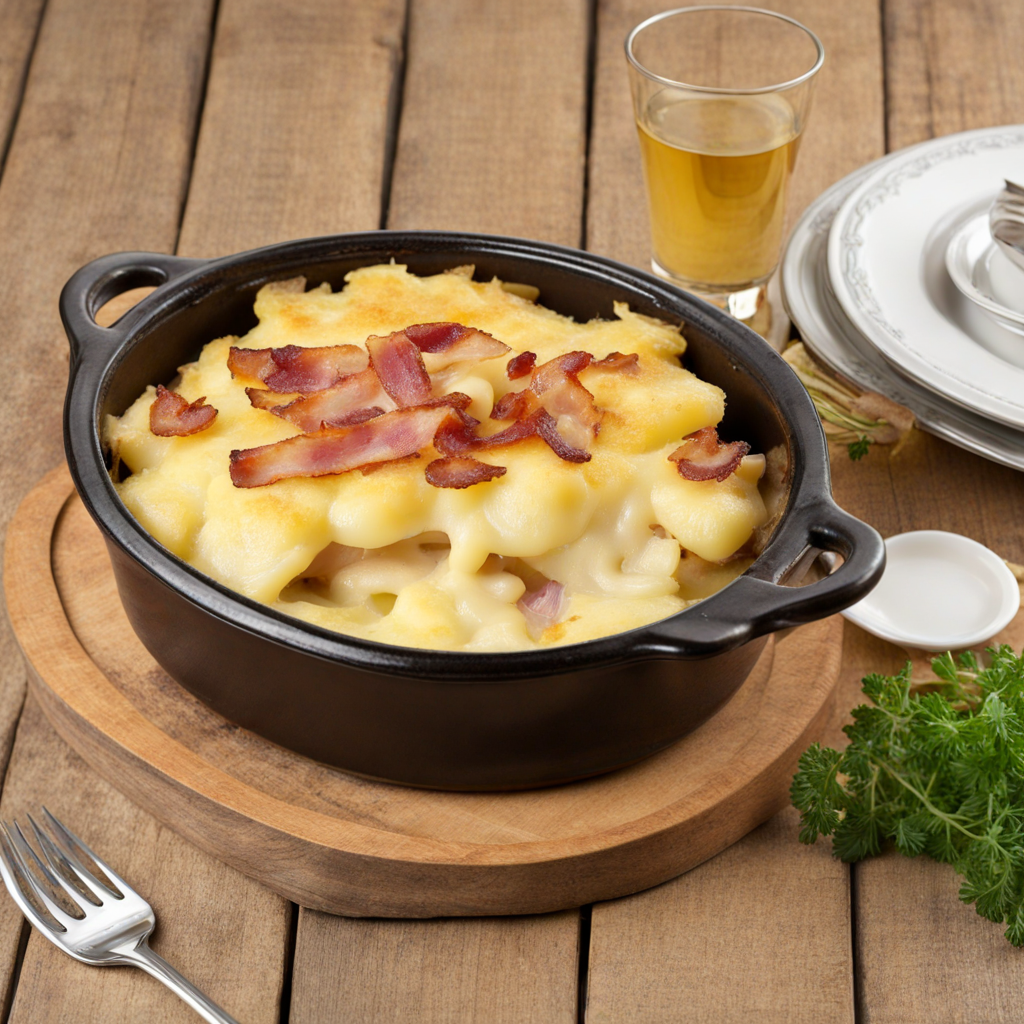Capuns
Capuns are a delightful Swiss dish that hails from the canton of Graubünden, offering a unique and hearty culinary experience. These flavorful parcels are made by wrapping a filling of spätzle (a type of soft egg noodle) mixed with various ingredients, such as meats, vegetables, and spices, in large Swiss chard leaves. The vibrant green color of the chard adds not only visual appeal but also a slightly earthy flavor that complements the rich filling. Traditionally, Capuns are served with a savory broth, making them a warm and comforting meal perfect for colder months. The preparation of Capuns showcases the ingenuity of Swiss cuisine, as it combines the wholesome ingredients of the Alpine region. The filling often includes local cheeses, such as Salsiz (a dry sausage), and can be adjusted to include seasonal vegetables, creating a dish that reflects the local produce. Once wrapped in chard leaves, the parcels are typically simmered gently in broth until tender, allowing the flavors to meld and create a satisfying dish that is both nourishing and delicious. Capuns are not only a testament to Swiss culinary tradition but also a celebration of the region's natural flavors. Each bite offers a delightful combination of textures, from the tender chard to the hearty filling, making it a truly unique experience for food lovers. Whether served at a rustic mountain inn or prepared at home, Capuns embody the spirit of Swiss hospitality and are a must-try for anyone looking to explore the rich tapestry of Swiss cuisine.
How It Became This Dish
Capuns: A Culinary Journey Through Swiss Tradition Nestled in the heart of the Swiss Alps, Capuns is a dish that embodies the rich tapestry of Swiss culture, history, and geography. Originating from the canton of Graubünden, Capuns are hearty bundles made from Swiss chard leaves, often filled with a savory mixture of meat, rice, and spices. This dish not only represents the flavors of the region but also serves as a testament to the resourcefulness of mountain communities throughout history. Origins The roots of Capuns can be traced back to the 19th century, although variations of wrapped dishes existed long before. The name "Capuns" is derived from the Romansh word "capon," which means "to wrap" or "to enclose." This reflects the practice of using local ingredients to create a dish that was both nourishing and practical for the agricultural lifestyle of the region. In Graubünden, the harsh Alpine climate necessitated a cuisine that could withstand the rigors of winter. The use of chard leaves for wrapping was a clever adaptation; these greens were hardy and could be cultivated in the short growing season typical of high-altitude farming. Corn, potatoes, and barley were staples, but the addition of chard not only added nutritional value but also enhanced the visual appeal of the dish, making it a favorite for family gatherings and communal feasts. Cultural Significance Capuns holds a special place in the hearts of the people of Graubünden. Traditionally, the preparation of Capuns is a communal activity, often involving families and friends coming together to prepare the dish for special occasions such as holidays, weddings, and harvest festivals. This act of cooking together fosters a sense of community and belonging, reinforcing cultural ties and shared heritage. In addition to its communal aspect, Capuns is emblematic of the broader Swiss ethos of utilizing local produce and ingredients. The reliance on seasonal and regional foods reflects a sustainable approach to cooking, one that honors the land and its offerings. The dish also showcases the diverse culinary influences in Switzerland, with its Italian, German, and French elements intertwining to create something uniquely Swiss. Development Over Time As the years progressed, Capuns evolved both in preparation and presentation, adapting to changing tastes and social dynamics. Initially, the filling consisted primarily of leftover meats, rice, and barley, reflecting the frugality of the peasant lifestyle. However, as the dish gained popularity, particularly in urban areas, variations began to emerge. In contemporary Switzerland, Capuns can be filled with a variety of ingredients, including veal, pork, and even vegetarian options that incorporate mushrooms and legumes. The use of different sauces, such as cream or tomato-based sauces, has also become common, allowing for a fusion of flavors that appeal to modern palates. The rise of culinary tourism in Switzerland has further propelled Capuns into the spotlight. Gourmet restaurants across the country have reimagined the traditional dish, showcasing it as a fine dining experience while still honoring its rustic roots. Michelin-starred chefs have experimented with ingredients and presentation, elevating Capuns to an art form that celebrates Swiss culture and tradition. Capuns Today Today, Capuns is not just a dish; it is a symbol of Swiss identity. It appears on the menus of both upscale restaurants and family-run eateries, and it is often served at festive gatherings. The dish has also transcended regional boundaries, becoming a beloved item throughout Switzerland. Festivals dedicated to Capuns and other local specialties celebrate the dish's cultural significance, often featuring cooking demonstrations, tastings, and competitions. The Swiss have also embraced modern dietary trends, resulting in the introduction of gluten-free and vegan versions of Capuns. Such adaptations ensure that this traditional dish remains relevant and accessible to a broader audience, allowing people from various backgrounds and dietary preferences to partake in its enjoyment. Conclusion Capuns is more than just a dish; it is a narrative woven into the fabric of Swiss life. From its humble origins in the Alpine villages of Graubünden to its status as a celebrated culinary gem, Capuns reflects the resilience, creativity, and communal spirit of the Swiss people. As it continues to evolve, Capuns remains a delicious reminder of the importance of tradition, sustainability, and the joy of sharing food with others. In a world that often seems fast-paced and disconnected, Capuns serves as a culinary anchor, drawing people together around a shared table, celebrating the past while embracing the future. Whether enjoyed in a rustic chalet or a modern bistro, Capuns carries with it the stories of generations, preserving the essence of Swiss culture in every flavorful bite.
You may like
Discover local flavors from Switzerland







